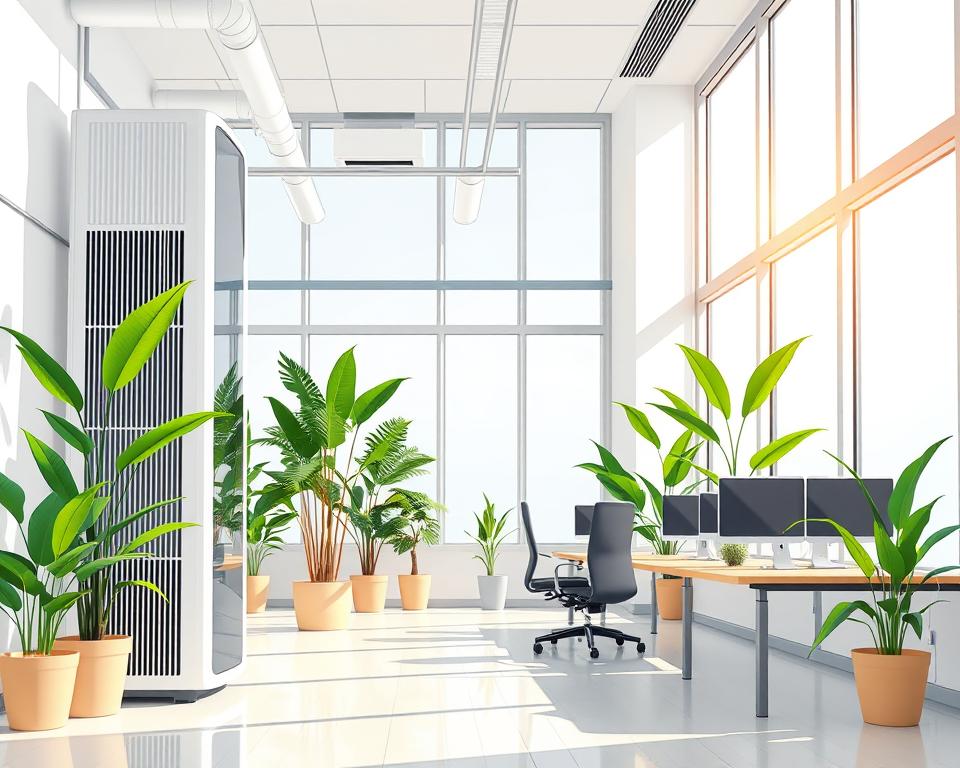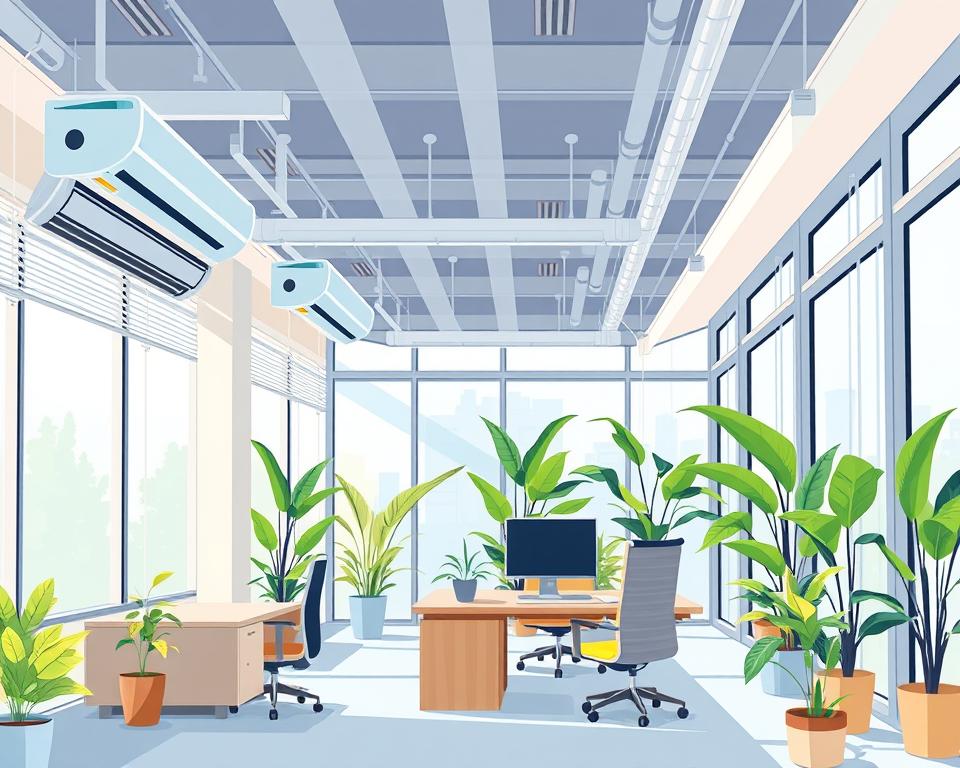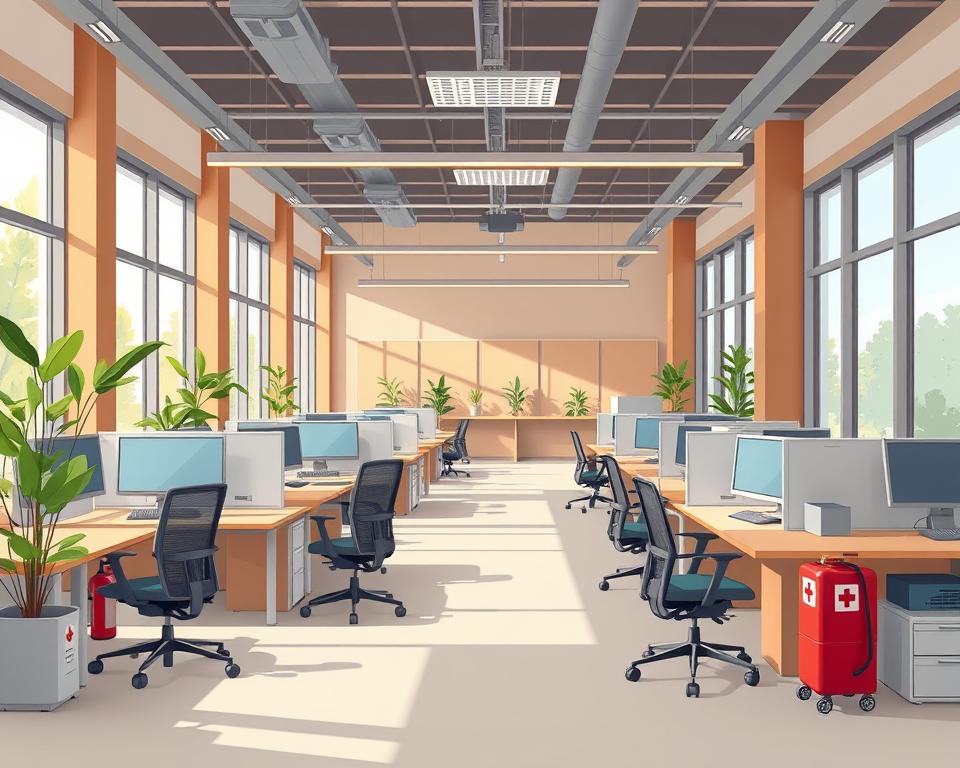Can a well-designed work environment be the key to safeguarding our future and preserving employee well-being? Across Australia, the nexus between Workplace Design and Safety is becoming increasingly crucial in enhancing productivity enhancement and ensuring occupational health. With almost every State and Territory adhering to the latest model WHS Regulations, save for Victoria, our understanding of what makes a workspace safe is evolving rapidly.
In light of the hefty A$380,000 penalty incurred by a Victorian employer for disregarding psychosocial hazards, the stakes have never been higher. Such oversights not only contravene the employer’s duty of care and can lead to Category 3 offences but could also result in charges as severe as industrial manslaughter. These stringent regulations underscore the importance of incorporating hazard prevention into the very blueprint of our workplaces.
Design for Safety (DFS) is an approach that weaves risk control into the planning phase, engaging stakeholders to foster an inclusive environment addressing the collective needs. It’s about re-imagining spaces that contribute to our welfare while meeting legal standards. Regular overhaul of these environments, to identify and mitigate new threats, is not just good practice—it’s essential to perpetuate a culture of safety.
Yet, it isn’t just about avoiding legal pitfalls. Optimal Workplace Design and Safety uplifts morale and productivity. As such, our commitment to these standards is unwavering, recognising that the harmony of these elements leads to unassailable employee well-being and is the cornerstone of productivity enhancement and occupational health.
We continue to witness the consequences of poor design choices, be it in monetary terms through increasing penalty amounts or the tangible harm on human health from poorly managed ergonomic hazards. In addressing these hurdles, we must turn to comprehensive and informed workplace designs—designs that protect, serve, and inspire. Let’s explore the multifaceted aspects of workspace design that directly impact not only our day-to-day safety but also our long-term health and welfare.
Optimising Workplace Layout for Hazard Prevention
We understand that a strategically planned workspace not only enhances productivity but is crucial in injury prevention and factory safety. By integrating safety optimisation into the very core of office layout and workspace optimization, we can significantly reduce workplace injuries and elevate the safety standards of any environment, be it an office or a factory floor.
Rethinking Office and Factory Floor Arrangement
Redesigning workspaces to include wide aisles, anti-slip flooring, and well-managed cable systems is essential. These features are not just enhancements; they are fundamental to creating a layout that preempts potential accidents and ensures a smoother operational flow. By allowing for spacious pathways, we ensure that there is less chance for trips and collisions, markedly improving overall safety.
Building In Safety Measures Through Design
Our design philosophy includes embedding safety features directly into the building layout. Ensuring that fire exits are not just present but clearly marked and easily accessible in case of an emergency is paramount. Similarly, essential safety installations like fire extinguishers should be straightforward to locate and reach. Effective design integrates these elements without compromising the aesthetics or functionality of the space. Through these strategic design choices, we actively contribute to factory safety and injury prevention, significantly cutting down on potential hazards.
The Role of Modular Furniture in Maintaining Safety
Modular furniture plays a pivotal role in maintaining flexibility while adhering to safety regulations. With options such as stackable chairs and adjustable tables, we can swiftly adapt the office layout to suit changing needs without sacrificing safety or comfort. This adaptability is especially beneficial in dynamic work environments where layouts must frequently be altered to suit new projects or team sizes.
To further explore how ergonomics contribute to safety and employee well-being, consider reading about ergonomic practices in workplace design. These insights reveal that incorporating ergonomic furniture and design not only enhances safety but also boosts employee satisfaction and productivity by minimising the risk of musculoskeletal injuries.
In summary, by rethinking our workplace environments from the ground up with an emphasis on safety, we not only create spaces that are free from hazards but also promote a culture of health and awareness. Through careful planning and design, we can optimise any workspace to be a model of efficiency and safety.
Lighting and Ventilation: Crucial Elements for a Safer Workplace
In our commitment to enhancing workplace safety, we recognize that good visibility and robust ventilation systems are not just options but necessities. These elements play pivotal roles in mitigating workplace hazards and bolstering respiratory health. By integrating advanced air purifiers and optimizing lighting, we actively contribute to a safer and more productive environment.
Addressing lighting, our approach ensures that every workspace is illuminated effectively to reduce eye strain and prevent accidents. We utilize a combination of natural light and LED fixtures to maintain brightness without glare, significantly improving good visibility and reducing risks associated with poor lighting, which is a common cause of injuries in Australian workplaces.
- Natural light sources are maximized to enhance employee wellness and concentration.
- LED lighting solutions are implemented to provide consistent and efficient illumination.
Turning to ventilation, our strategy includes the use of high-quality air purifiers and HVAC systems to ensure that air quality is maintained at all times. These systems are crucial for removing contaminants and allergens from the air, crucial for workers’ respiratory health. With the integration of Local Exhaust Ventilation (LEV) systems, we effectively tackle pollutants at their source, keeping the air clean and safe.
- Implementation of LEV systems to capture and remove airborne contaminants directly.
- Regular maintenance and checks ensure these systems operate effectively, preventing any potential workplace hazards related to air quality.
By taking these measures, we not only comply with Australian safety regulations but also enhance overall well-being and productivity. The benefits of such investments are clear, reflecting in the lower incidence of workplace-related illnesses and a boost in staff morale.

The Impact of Noise Control and Workplace Ergonomics on Employee Health
Enhancing workplace ergonomics and controlling noise pollution are pivotal steps in safeguarding employee health and well-being. By integrating effective noise control measures and ergonomic design principles, businesses can significantly improve the quality of the working environment.
Soundproofing Techniques and their Benefits
Implementing soundproofing strategies is essential to mitigate the adverse effects of noise pollution in the work setting. According to the Control of Noise at Work Regulations, employers are mandated to assess noise risks and adopt appropriate preventive measures. This includes installation of noise barriers in manufacturing plants and providing noise-canceling headsets in call centers. Benefits of such practices extend beyond hearing preservation, enhancing focus, and productivity among employees.
Ergonomic Furniture and Tools for Injury Prevention
Workplace ergonomics focuses on designing workspaces that align with human body dimensions, ensuring comfort and reducing injury risks. The implementation of ergonomic furniture, such as adjustable chairs and desks, supports proper posture and minimizes musculoskeletal strain. Regular ergonomic assessments and workstation adjustments, as outlined by safety guidelines such as the WorkSafe Victoria Compliance code, play a critical role in preventing conditions like back pain and carpal tunnel syndrome.
- Reducing exposure to high noise levels with technological and structural adjustments decreases the possibility of noise-induced hearing loss.
- Ergonomic interventions not only prevent injury but also enhance overall employee morale and productivity by up to 30%.
- Addressing ergonomic risks in remote work scenarios is equally important; providing employees with the necessary resources to set up a home office ergonomically can lead to healthier and more satisfied workforce.
Ultimately, combining efforts in noise control and ergonomic optimization contributes enormously to the workplace’s overall health and safety culture. This proactive approach in fostering a noise-reduced and ergonomically friendly work environment leads to sustainable employee performance and well-being.
Workplace Design and Safety: Understanding Temperature and Humidity Concerns
A well-designed workplace not only boosts productivity but also addresses critical environmental factors such as temperature control and humidity levels, crucial for preventing heat stress and other thermal discomforts. Understanding and managing these conditions effectively is essential to maintaining a safe and comfortable workplace environment.
Protecting Workers from Extreme Conditions
We recognize the varying temperature preferences amongst individuals, which can significantly affect their comfort and productivity. To cater to these needs, it’s important to strike a balance. For instance, maintaining a recommended summer office temperature around 24.5°C and a winter temperature around 22°C ensures that employees are comfortable without feeling too cold or too warm. These conditions help in reducing restlessness and minimize the risks associated with extreme temperatures.
Further addressing environmental factors that influence thermal comfort, such as air temperature, radiant temperature, and air velocity, plays a pivotal role. Ensuring that air moves sufficiently without causing drafts, and managing the impact of radiant heat sources like sunlight and equipment, are crucial steps towards heat stress prevention.
Effective Climate Control Systems
To manage these thermal factors effectively, the installation of advanced climate control systems is advisable. These systems help in maintaining optimal humidity levels, recommended to be around 50% to prevent dry air that can lead to respiratory discomfort, and high moisture levels that could foster mould growth and other hazards.
Apart from automated temperature controls, our approaches include periodic assessments of the environmental conditions and adjusting the workplace layout to minimize direct sunlight exposure which can lead to overheating. Employing shades, reflective window films, and strategic placement of heat-producing equipment are key tactics used.

In our ongoing efforts to create safer workplace environments across Australia, we adhere to the guidelines set by Workplace Health and Safety Queensland, utilizing tools like the Heat Stress Calculator. This proactive approach ensures that we not only comply with occupational safety standards but also enhance our workers’ well-being through effective temperature and humidity control strategies.
Visual Cues to Safety: The Importance of Signage and Clear Pathways
In our commitment to enhancing workplace safety, it’s crucial to understand the significant role played by clear signage and unobstructed movement. Strategic placement of visual cues not only fulfills key safety regulations but also maintains a seamless flow of operations within the workplace.
Implementing effective signage for hazard awareness is pivotal. It is proven that well-placed safety signs can reduce workplace accidents in Australia by up to 50%. Such signs alert staff and visitors about potential dangers, ensuring everyone is aware of their environment. Additionally, clear signage supports safety protocols by guiding individuals safely around the workspace, significantly lowering the risk of accidents.
Effective Signage for Hazard Awareness
- Terminology and symbols that are universally understood prevent misinterpretations and ensure that all individuals, regardless of their lingual proficiency, can comprehend the safety messages.
- Regular updates to signage to reflect any new hazards or changes in environment, aligning with the latest safety regulations.
- Employing colour coding and illumination for signs to enhance visibility and promptness in hazard perception.
Designing for Unobstructed Movement
Maintaining unobstructed pathways within the workplace is not just about adherence to safety regulations; it significantly contributes to operational efficiency and emergency preparedness. Workplaces that ensure their pathways are clear can reduce time wasted by up to 20%, which is often lost due to miscommunication or difficulty in navigation.
- Maintaining spacious walkways free from obstructions allows safer and faster evacuations during emergencies.
- Designing layouts that facilitate intuitive movement through the workspace reduces the likelihood of injuries and enhances overall productivity by eliminating unnecessary barriers or detours.
- Implementing continuous monitoring and clearance of potential obstacles in common areas to promote a culture of unobstructed movement and safety consciousness.
By embracing clear signage and designing for unobstructed movement, workplaces not only comply with stringent safety regulations but also create an environment where staff feel secure and valued. This approach not only decreases the incidence of workplace accidents but significantly boosts employee morale and productivity.
From Fire Safety to Sanitation: Comprehensive Design Considerations
In our ongoing commitment to ensure a safe and healthy workplace, addressing comprehensive design considerations is paramount. Incorporating elements of fire safety and bathroom sanitation into our occupational health strategies significantly contributes to overall safety and well-being.
Fire Safety in Design: Integrating robust fire safety measures is non-negotiable. This includes installing smoke detectors, fire alarms, and appropriate fire extinguishers at strategic locations throughout the workplace. Ensuring that all escape routes are clearly marked and unobstructed is also a critical factor in our safety planning.
- Conducting regular fire drills ensures that all employees are prepared in case of an emergency.
- Maintaining clear pathways and exits can significantly reduce the risk of injury during evacuations.
- Installation of fire-resistant materials in construction reduces the possibility of severe damage and loss.
Bathroom Sanitation: Maintaining high standards of hygiene in the workplace is essential for employee health. In the realm of bathroom sanitation, automated fixtures such as sensor-based taps, toilets, and soap dispensers help minimize physical contact and reduce the spread of germs.
- Regular cleaning and sanitization schedules keep bathroom facilities pristine and germ-free.
- Employing touch-free technology not only aids in sanitation but also enhances user convenience and accessibility.
- Ensuring that all plumbing is regularly checked prevents leaks and other issues that could compromise hygiene.
Occupational Health Considerations: Beyond emergency preparedness and hygiene, general occupational health must also be prioritized. This includes ergonomic workplace design that prevents injuries and promotes comfort, such as adjustable seating and desks, and sufficient natural lighting to enhance mood and productivity.
- Implementing regular health and safety training keeps safety procedures at the forefront of team practices.
- Ensuring that the workplace environment is adaptable to the diverse needs of all employees fosters inclusivity and well-being.
- Regular assessments and feedback mechanisms allow for continual improvement of health and safety standards.
By integrating these essential considerations into our workplace design, we not only adhere to regulatory requirements but also foster a culture of safety and respect. This holistic approach to workplace safety upholds our commitment to providing a safe, healthy, and productive environment for all employees.
Securing the Premises: How Design Influences Workplace Security
At the core of designing a functional office space lies the imperative of workplace security. This facet of design is about more than just an afterthought to aesthetics or workflow; it is the shield that protects both organisational assets and the personnel that animate our businesses. By incorporating principles of Crime Prevention Through Environmental Design (CPTED), we have seen organisations throughout Australia bolster their security strategies. CPTED’s focus on natural surveillance, access control, territorial reinforcement, and meticulous maintenance provides a strong framework for deterring criminal activity and reinforcing safety.
Our architectural designs contribute significantly to workplace safety and security. For instance, open office layouts are not only emerging trends for collaboration but also strategic designs that enhance visibility and minimize hidden or segregated areas which could foster potential security breaches. Alongside, implementing access control measures such as electronic locks and biometric scanners are pivotal in ensuring restricted access, thereby underpinning theft prevention and safeguarding against unwarranted entry. The amalgamation of strategic design elements, such as adequate lighting in all corners and emergency response plans, inherently correlates to reduced crime rates and enhanced employee productivity.
With regular reviews and security assessments, businesses can maintain the robustness of security measures. From secure entrances and exits to efficient emergency evacuation processes, every design detail contributes to the overall security posture. Furthermore, designs that marry aesthetics with functionality – utilizing natural elements like plants and daylight, also support employee well-being, which is intrinsically linked to alertness and vigilance – vital components for vandalism protection and a secured working environment. As we move into the future, an enduring emphasis on spaces that are not only industrious but also secure will continue to shape our workplace environments in Australia.
FAQ
Q: How does workplace design contribute to employee safety in Australia?
A: Effective workplace design factors in safety through ergonomics, good visibility, and operational health measures, which collectively contribute to reducing workplace hazards, enhancing employee well-being, and boosting productivity.
Q: What strategies can be used to prevent hazards when optimising workplace layout?
A: Strategies include rethinking office and factory floor arrangements to ensure spacious aisles and anti-slip flooring, building in safety measures through design such as clear signage and escape routes, and leveraging the role of modular furniture for quick adjustments to workspace optimisation.
Q: Why are lighting and ventilation crucial in workplace design?
A: Good lighting ensures visibility, preventing accidents and strain, while proper ventilation enhances respiratory health by removing contaminants and reducing risks of illness, thus contributing to a safer work environment.
Q: How does noise control improve occupational health and safety?
A: Incorporating soundproofing techniques helps prevent stress, fatigue, and hearing loss caused by noise pollution, thus enhancing the overall health and well-being of the workforce.
Q: Why are ergonomic considerations important for employee health?
A: Ergonomic furniture and tools are designed to align with human body proportions, helping prevent musculoskeletal injuries and subsequently improving comfort and health at work.
Q: What role does temperature control play in workplace design?
A: Managing temperature and humidity levels through climate control systems is essential to prevent heat stress or cold-related illnesses, thereby ensuring a comfortable and safe work setting for employees.
Q: How does effective signage contribute to workplace safety?
A: Effective signage ensures hazard awareness, informing and alerting employees to potential risks, and contributes to maintaining clear pathways and unobstructed movement, aligning with safety regulations.
Q: What comprehensive design considerations are essential for fire safety and sanitation?
A: A holistic approach to design includes fire safety measures like clear escape routes and extinguishers, as well as bathroom sanitation with automated fixtures to reduce bacterial spread, providing a secure and healthy workplace.
Q: How does workplace design influence security?
A: Design influences security by integrating access control systems to prevent unauthorised entry, thus protecting against theft, vandalism, and ensuring a secure environment for employees, information, and assets.

